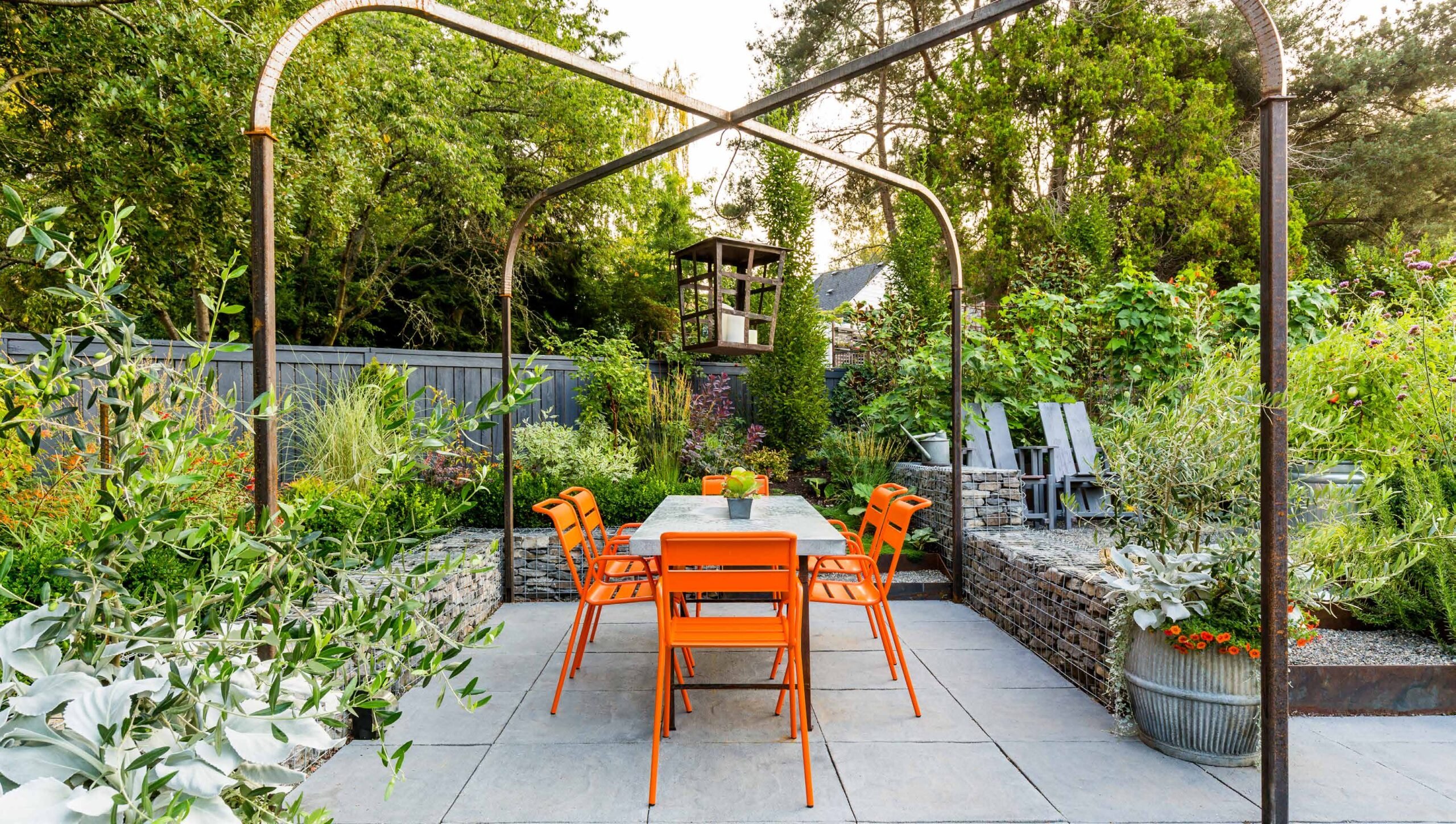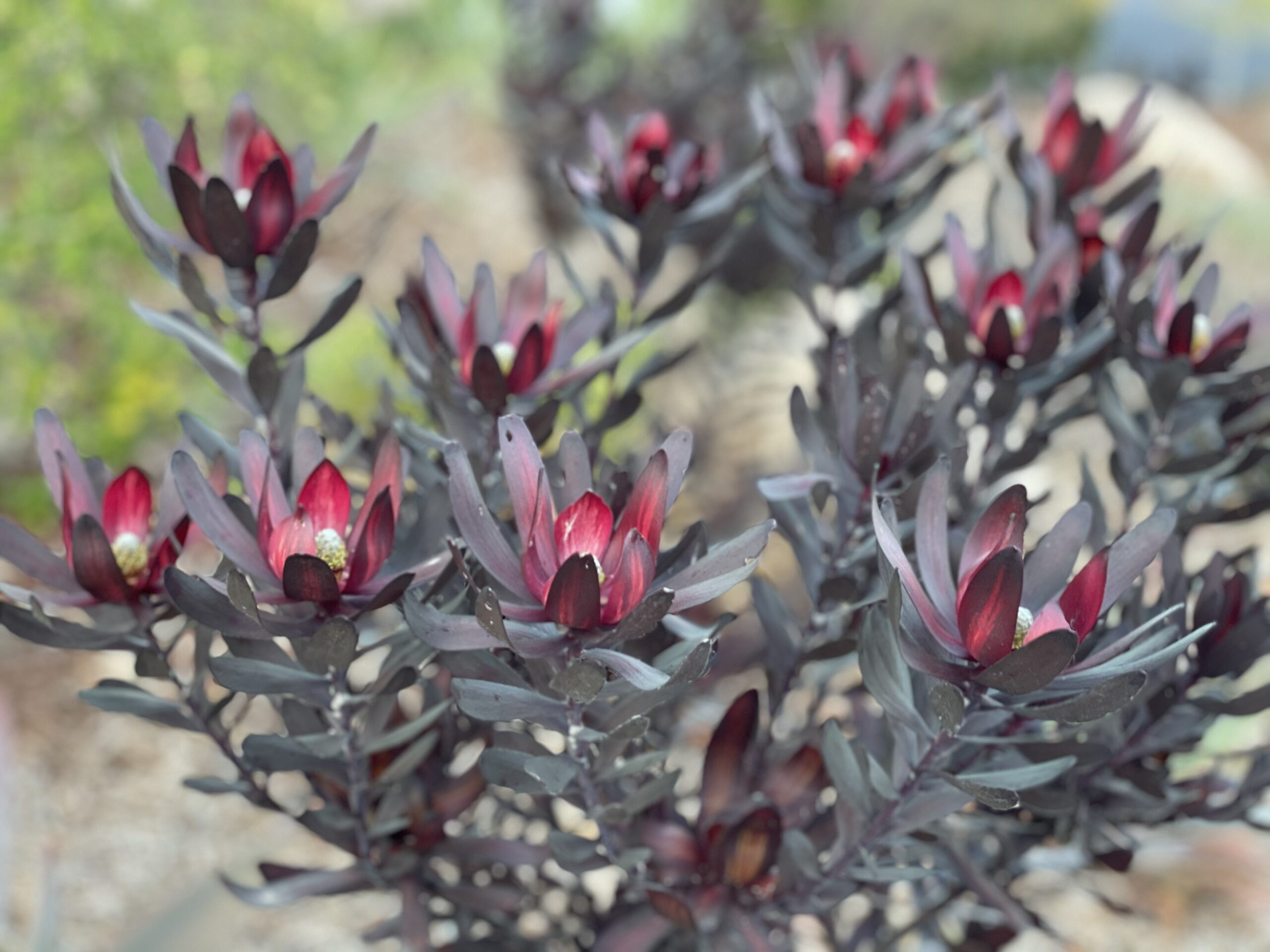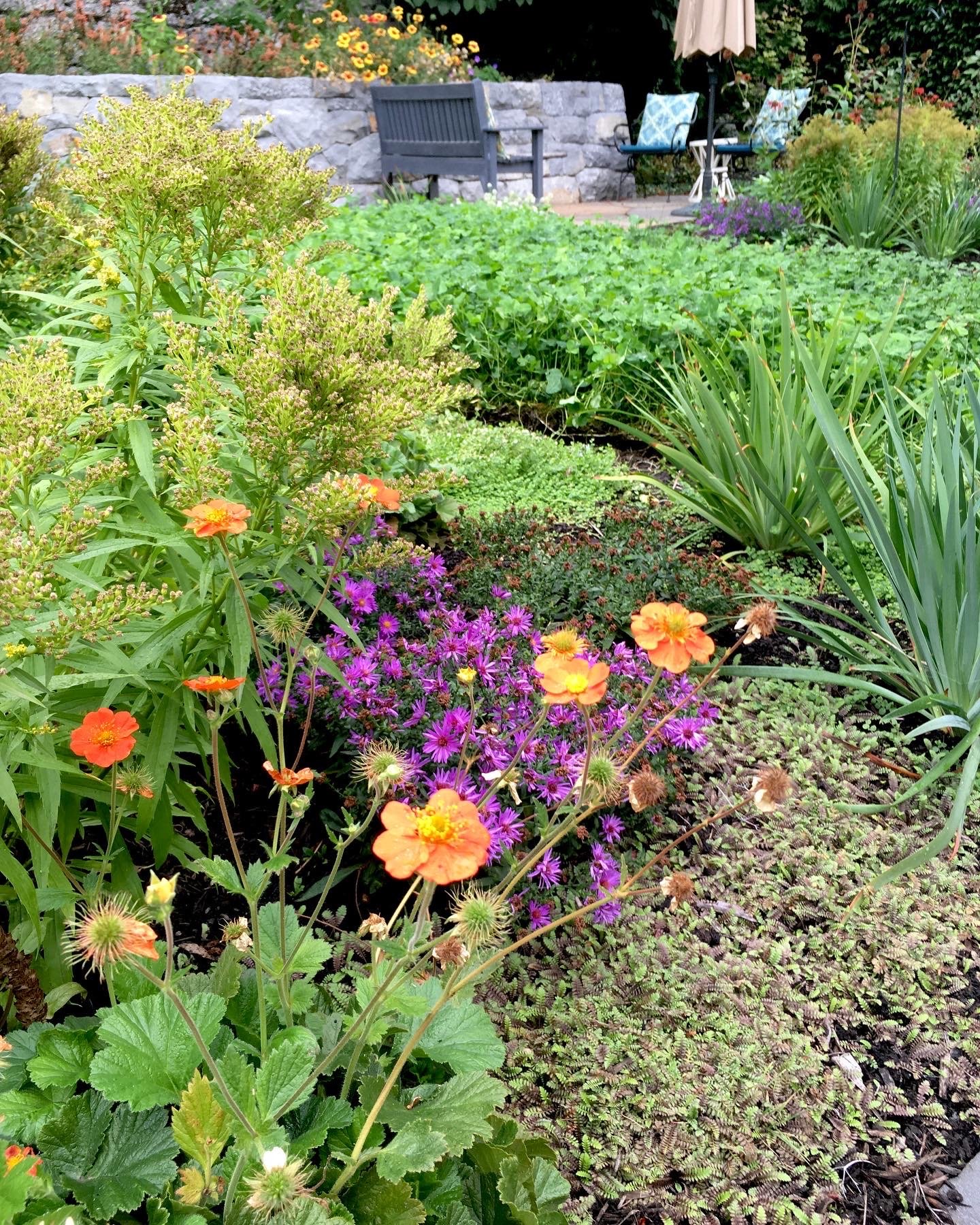
Pacific Plant People: Carol Bornstein

Contributor
- Topics: Plants You Need
Spring 2022
Public gardens play a key role in demonstrating naturalistic planting design, selecting native and adapted plants for habitat, and testing techniques for reducing landscape water consumption. Chief among these institutions’ collective resources is the expertise of acclaimed professionals like Carol Bornstein. Her depth of knowledge has contributed to projects that can bring benefit to all regional gardeners.
The Nature Gardens and Pollinator Meadow
The Natural History Museum of Los Angeles County hosts the Nature Gardens, a place for urban wildlife to thrive and for visitors to learn and experience nature in an urban setting. This three-and-a-half-acre area in Exposition Park includes features such as the Edible Garden, the Pollinator Meadow, and the Oak Woodland. “The Nature Garden is a blended landscape of some 600 plant species from all over the world, adapted to the southern California climate and selected to provide habitat for wildlife,” explains former Director of the Nature Gardens Carol Bornstein.
The push to reduce landscape water consumption regionally has led to the promotion of naturalistic plantings and meadow gardens as a possible alternative to lawn. In the Nature Gardens, the Pollinator Meadow is a naturalistic area that features bunchgrasses and flowers native to California. “The Pollinator Meadow is a tapestry of colors and textures, an exuberant mix of grasses and wildflowers,” according to the museum’s website. A wonderful opportunity for visitors to see flowers and pollinators, meadow gardens can also be challenging for horticulturists because inviting nature to find its own balance can result in the encroachment of undesirable weedy species.
The bunchgrasses used in the Pollinator Meadow at the Nature Gardens include:

Right: Silver beard grass (Bothriochloa barbinodis). Photo credit: Ellen Zagory
Canyon Prince wild rye (Elymus condensatus ‘Canyon Prince’, syn. Leymus condensatus ‘Canyon Prince’) is a bold-textured grass that spreads by rhizomes with stunning blue-gray foliage in spring and summer. It benefits from being cut to the ground every few years in fall to remove accumulated dead stalks and force new growth. Beware that when it first resprouts it will come back green, but gradually return to a beautiful blue-gray with the heat of summer.
Alkali sacaton (Sporobolus airoides) is a fine-textured grass that is native to moist places in the desert and is very tolerant of dry summers. It produces delicate airy plumes that wave gracefully in the wind. Foliage can be cut to the base in late winter or early spring to refresh the plant.
Purple three-awn (Aristida purpurea) has flower spikes that ripen from very purple in spring to a beautiful blonde color in summer. It can be rambunctious and spread by seeds, so is best used only for low-water landscapes. Carol said, “I caution people that the awns are sharp and can stick in socks and animal fur,” but it is beautiful in large swaths.
Silver beard grass (Bothriochloa barbinodis) is a vigorous grass originally planted in the meadow that sprouted readily from seeds dropped by the original plants. It started to crowd out other plants, so staff decided to remove it from the Meadow. It has beautiful, silvery flower spikes and was far less aggressive when grown in the heavy clay soils in the SBBG Meadow, where it didn’t reseed.

Santa Barbara Botanic Garden Plant Introductions
The Santa Barbara Botanic Garden (SBBG) formalized its longstanding plant introduction program in the mid-90s, which Carol oversaw as SBBG Director of Horticulture. The program established a network of botanic gardens and wholesale nurseries that tested plant selections and gathered information on their growth under a variety of conditions across the state.
SBBG is located in Mission Canyon, and as a means to help promote brand development and support their introductions, many of their cultivar names include the word “canyon.” Widely grown examples include Canyon Snow iris (Iris douglasiana ‘Canyon Snow’), Canyon Pink coral bells (Heuchera ‘Canyon Pink’), and Canyon Gray sagebrush (Artemisia californica ‘Canyon Gray’). Other introductions include:

Right: Silver Carpet aster (Corethrogyne filaginifolia ‘Silver Carpet’). Photo credit: cultivar413 (CC BY 2.0)
De La Mina verbena (Glandularia lilacina ‘De La Mina’, syn. Verbena lilacina ‘De La Mina’) is a darker-flowered form of a mounding perennial species collected on a sponsored trip to Cedros Island, one of the Channel Islands off Baja California, Mexico that is part of the California Floristic Province. Carol spotted it just off the path in the Cañada de la Mina, collected a few cuttings, and propagated them at the garden. The plant was attractive, propagated easily, and grew well where tested. When shared with Dave Fross, owner of Native Sons Nursery, he said “Just introduce it!” A very floriferous plant, this widely sold plant now features in many California gardens.
Silver Carpet aster (Corethrogyne filaginifolia ‘Silver Carpet’, syn. Lessingia filaginifolia ‘Silver Carpet’) is a silver-foliaged plant with lavender-pink daisy flowers from the Monterey County coast near Big Sur. Collected by Carol for its nice prostrate form, good flower color, and contrasting silvery foliage, the plant is attractive even when not in bloom.
Naturalistic Plantings and Beauty
Moving from SBBG to the Nature Gardens offered Carol “an opportunity to see how plants performed on our site versus in Santa Barbara, and how there were sometimes considerable differences in plant growth between the two places, just 90 miles apart.” She attributed these differences to the large variation in microclimates in the Los Angeles Basin depending on coastal influence, elevation, soil types, and the heat island effect in constructed urban landscapes. She found the experience educational, “reinforcing the need to understand your place,” since every site is unique and can affect plants differently.
When considering the art of combining gardens and beauty with conservation and sustainability ideals, “Beauty is not just a flower border, it is wild nature as well, and we do not need to sacrifice beauty to do good, to provide habitat, to improve our ecological footprint, and enhance our surroundings,” Carol said. “What is critical is changing people’s idea of how they define beauty.”
Carol Bornstein worked for nearly 30 years for the Santa Barbara Botanic Garden (SBBG) and more recently was the Director of the Nature Gardens at the Natural History Museum of Los Angeles County. Carol co-authored, with David Fross and Bart O’Brien, California Native Plants for the Garden and Re-imagining the California Lawn: Water-conserving Plants, Practices, and Designs. This article is based on her video interview with Saxon Holt for our Pacific Plant People video series.
Resources
For descriptions and a complete list of introductions at the Santa Barbara Botanic Garden, see SBBG Cultivars.
Carol has a long list of resources for folks wanting to learn more about more environmental gardens. Online resources include Calscape and the San Marcos Growers plant database. The Xerces Society for Invertebrate Conservation has excellent webinars. She also recommends Douglas Tallamy’s work to create “one garden at a time, transformed to beautiful, productive habitat.”
Allen, Robert L. and Fred M. Roberts Jr. 2013. Wildflowers of Orange County and the Santa Ana Mountains. Laguna Beach: Laguna Wilderness Press.
Anderson, Kat. 2005. Tending the Wild: Native American Knowledge and the Management of California’s Natural Resources. Berkeley: University of California Press.
Editors of Sunset. 2012. The New Sunset Western Garden Book. Seattle: Time Incorporated Books.
Perry, Bob. 2010. Landscape Plants for California Gardens. Claremont: Land Design Publishing.
Pittinger, D. 2015. California Master Gardener Handbook, Second Edition. Publication Number 3382. University of California Agriculture and Natural Resources.
Share:
Social Media
Garden Futurist Podcast
Most Popular
Videos
Topics
Related Posts

Design Futurist Award Announced: Committee Shares Vision
March 8, 2023 At Pacific Horticulture, we believe that beauty can be defined not only by gorgeous plants and design, but also by how gardens

Expand Your Palette: Waterwise Plants for your Landscape
There’s nothing more thrilling to plant lovers than discovering new plants to test in the garden. Here in the southernmost corner of California, we have

Nature Therapy from the Contemplative Garden
Winter 2022 Women’s hushed morning voices mingled with crashing waves and chattering crows. “The kettle’s still hot.” “Can you pass the honey?” Whoosh, crash, caw,

Portland Parks’ “Nature Patches”
Winter 2022 Nature is so beautiful when left to its own devices, yet crisply manicured lawns remain a status symbol. This is true in Portland,








Responses